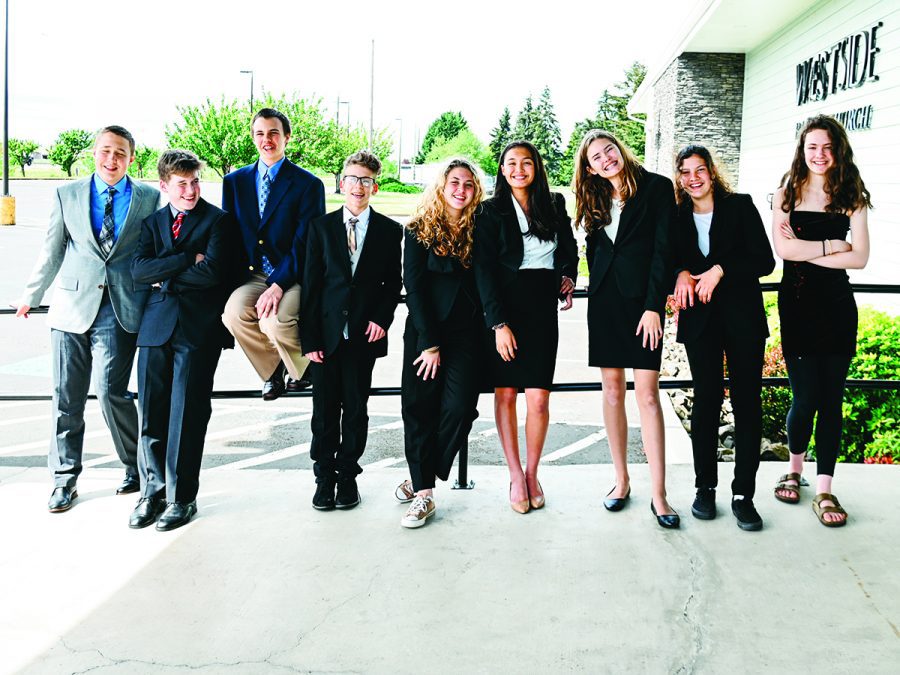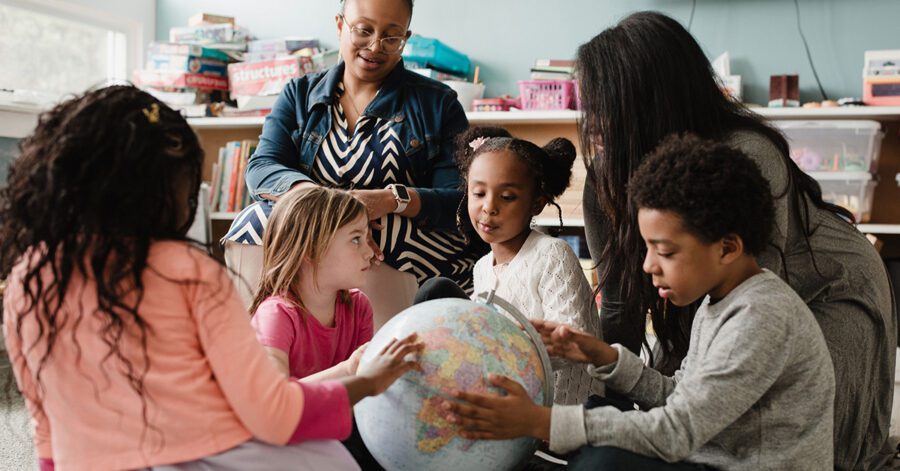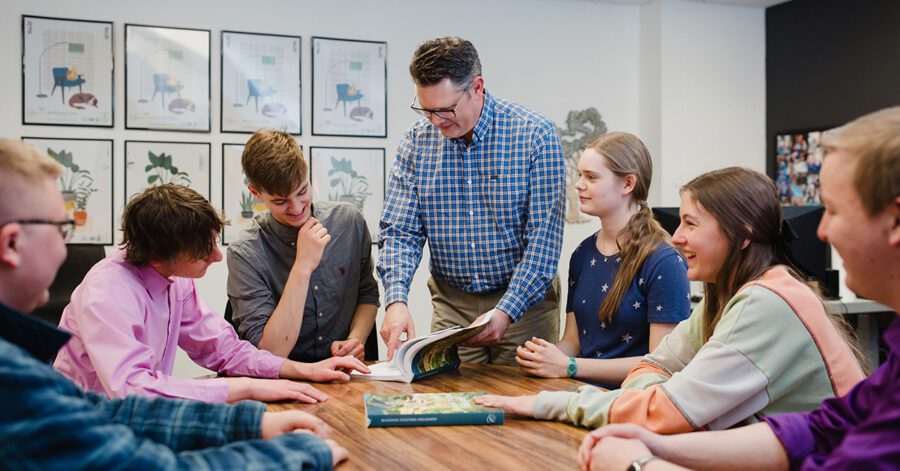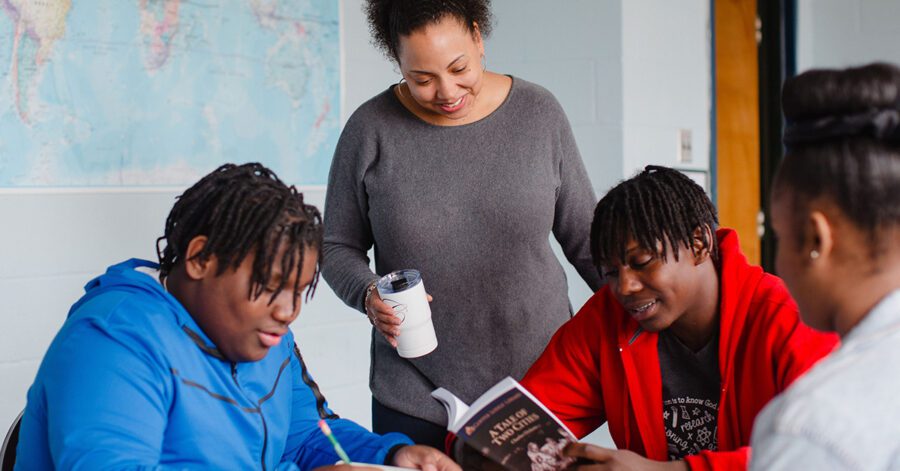For several years, I regarded the coming of Challenge B with fear and trembling because of one thing: Mock Trial. I had never participated in any form of debate during my school years, so it was a vast unknown. (Well, not entirely unknown, but I am not sure my fascination with courtroom dramas on TV counts as courtroom experience.) I was not sure I could help my son with Mock Trial in any constructive way. Yet I concealed my fears from him, took a deep breath, and took the plunge.
4 Tips to Make Mock Trial Worth the Investment
In every level of Challenge, there are certain books that parents must read with their children and there are certain projects with which we must be fully engaged. I had already identified Mock Trial as one of these projects, so I rose early one morning to read through my son’s notebook. At least I would not be completely ignorant.
What I found was truly fascinating — witness statements, police reports, potential objections, and precedents from prior case law. However, the facts did not really help. It is the job of the students to comb through the evidence and create a case. The Challenge Director and parents are to help them think about the process, not to do their work for them. I now had information, but I did not have a clear idea of how to help.
1. Ask Good Questions About Mock Trial
On the morning the defense team was scheduled to meet in our home, I had a revelation. I could help the same way I help in many other subjects in which I am not an expert — I can ask good questions.
For the first part of the meeting, I simply listened as they read their opening statement and began to question their witnesses. As we prepared to run through the case, I suggested they look at the order of the trial so that they would be ready to speak in the actual courtroom. For the first time in 13 weeks, my son seemed to be really and truly thinking about the meaning behind the order of the trial. He looked up from the notebook and said, “Hey! How come the prosecution gets to go first and last? That gives them an unfair advantage.”
Instead of responding, I asked a question.
Me: “What’s the job of the prosecution?”
Students: “Um, to prove that she is guilty?”
Me: “That’s right. Now, what’s the job of the defense?”
Students: “To prove that she’s innocent.”
Me: “No, remember, in America she is presumed innocent until proven guilty. What does your team have to do?”
Students: “Oh, yeah. Our Director said our job is to create reasonable doubt of her guilt.”
Me: “Yes. The prosecution has the burden of proof which is why they go first and last.”
Any parent can ask questions to help students learn any subject. With Mock Trial, it’s no different.
2. Reflect on the Bill of Rights
After this conversation, I realized how little the students knew about the American justice system, so I decided to back up, and I asked them to spend some time reflecting on the Bill of Rights.
Since most of them had been in the Foundations program for several cycles, this proved easy. We chanted the ten rights they had memorized, and I asked, “How many of those pertain to our rights in the criminal justice system?” They took a minute to count and realized that fully half of the rights listed in the Bill of Rights pertain to the rights of the accused: #4 Warrants, #5 Self-Incrimination, #6 Speedy Trial, #7 Jury, #8 Cruel and Unusual Punishment.
Students: “Why did they put so much stuff about trials in the Bill of Rights?”
Mom: “When was the Bill of Rights written?”
Students: “At the same time as the Constitution, after the American Revolution.”
Mom: “Right. What kind of government had these people just overthrown?”
Students: “A monarchy.”
Mom: “Yes. What kinds of rights do you think the accused have under an absolute monarchy?”
Now we were getting somewhere. In the course of this casual and unplanned conversation, we had hit upon one of the Five Common Topics of Invention — Circumstance. Before we can understand any issue, we must ask the questions, “What else was going on? What happened before? What was happening in the rest of the world?” Now the students understood the significance of their assignment, the importance of upholding justice in our nation.
3. Compare the Trial to What Students Already Understand
Having established the significance of the exercise, we were ready to launch into the particulars. I began to see that their job during the trial was not so very different from writing a persuasive essay—something I know a bit about.
So, we began to talk about how their different roles were like the parts of an essay. The opening statement is similar to the opening paragraph with the dramatic opener, the background information, and the thesis (the reason the jury should find the defendant not guilty). Questioning the witnesses is similar to the body paragraphs in which you offer proofs of your thesis. Finally, the closing statement is similar to the conclusion of the essay, in which you repeat your thesis and proofs, and appeal to the audience to act upon their newfound knowledge.
Armed with this analogy, the students could spend the rest of the morning working together to make sure their different roles flowed together into one coherent story. They worked long hours and they each learned how to contribute to the process until their team functioned in unison.
4. Think About Lessons Learned From Mock Trial
The next day, I asked my son to reflect on what he learned. “I learned how to ask good questions and to think on my feet. Mostly, though, I learned about our justice system—how it works and why it is so important.” These are good lessons, indeed, and these young people are equipped to ensure that our country continues to offer “liberty and justice for all.”
Mock Trial: Worth the Investment
Whether you’re a Challenge B Director or not, you can help your child succeed at Mock Trial by simply pointing them in the right direction. All I had to do was ask the students in my Challenge B program good questions, encourage them to remember the Bill of Rights, compare the structure of a trial to something they already understood, and reflect on lessons learned.
Interested in directing a Classical Conversations program and leading the next generation of lifelong learners? To take your first steps in the Director journey, click here.
This article was originally written by Jennifer Courtney in 2013.




